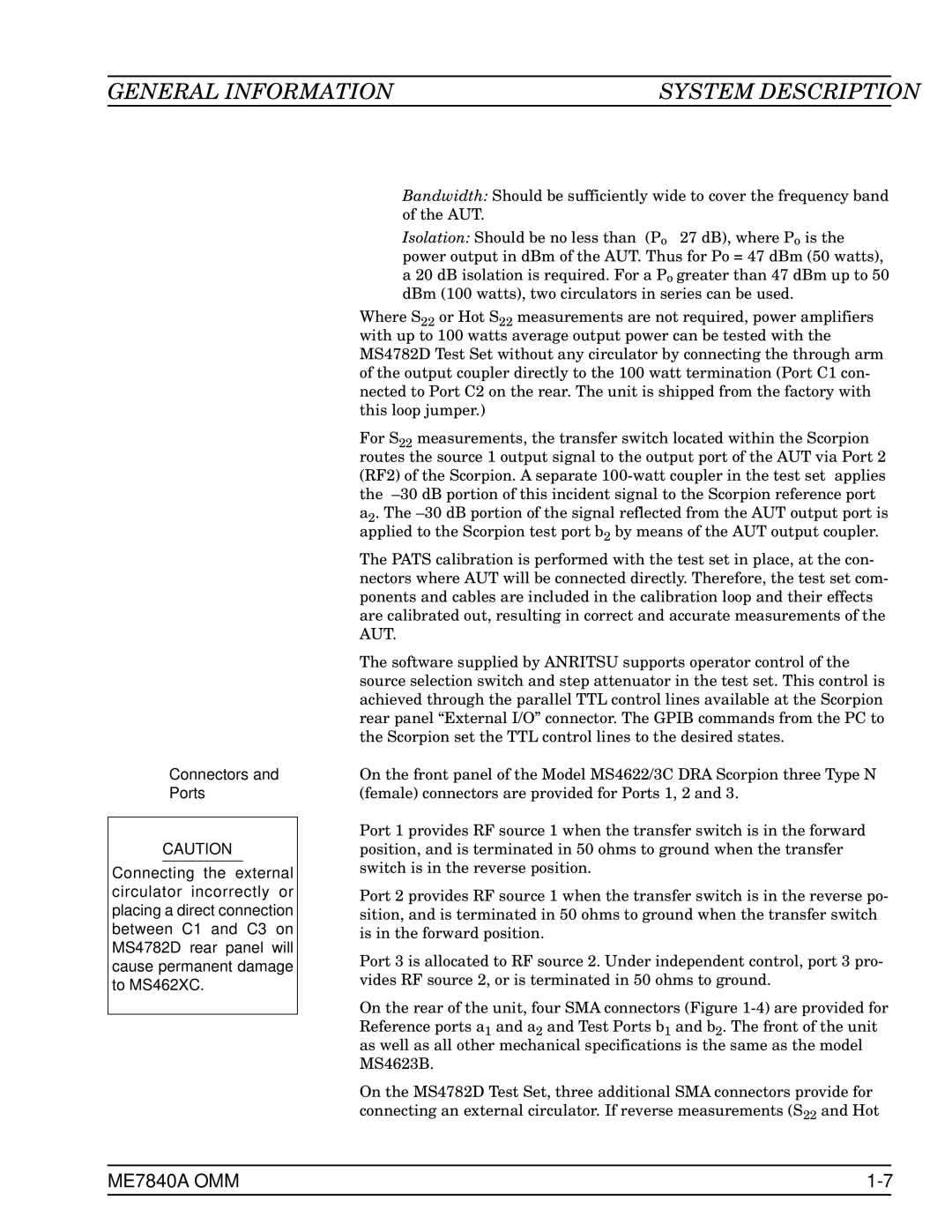ME7840A specifications
The Anritsu ME7840A is an advanced test solution designed for characterizing and verifying the performance of wireless devices. With the rapid evolution of communication technologies, specifically in the realms of 5G and beyond, the ME7840A plays a crucial role in ensuring that devices meet the rigorous standards required for modern connectivity.One of the primary features of the ME7840A is its high-performance vector signal analysis. It supports a broad spectrum of modulation formats, making it an ideal choice for testing a wide variety of wireless communication technologies. This includes LTE, NR (New Radio), Wi-Fi 6, and more. The system is capable of handling both uplink and downlink tests, providing a comprehensive solution for manufacturers looking to optimize their devices' performance.
Another key feature is its modular architecture, allowing for extensive customization based on specific testing needs. This flexibility means that users can mix and match different modules to create a tailored test setup that suits their particular requirements, whether they are focused on RF parameters, protocol conformance, or more specialized tests.
The ME7840A also integrates several advanced measurement technologies. For instance, its real-time signal analysis capability enables users to conduct in-depth examinations of complex signals, offering insights that can drive innovation and improve device reliability. Furthermore, this platform supports high-speed measurements with high accuracy, ensuring that manufacturers can achieve precise results in their testing processes.
Moreover, the ME7840A is equipped with automation features that streamline the testing process, significantly reducing the time and effort required to conduct tests. The system can be integrated into automated test environments, which is a key advantage for manufacturers seeking to enhance their production efficiency.
The Anritsu ME7840A's user-friendly interface also deserves mention. This accessibility ensures that engineers can quickly learn how to operate the system, allowing them to focus more on their testing objectives rather than on navigating complex software.
In summary, the Anritsu ME7840A is a versatile and powerful test solution that meets the diverse needs of the wireless industry. With its robust features, modular design, advanced measurement capabilities, and automation options, it is an essential tool for manufacturers aiming to stay competitive in today's fast-paced technology landscape.

